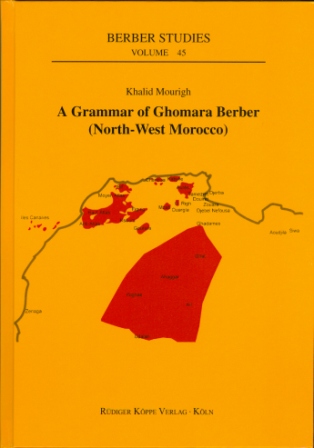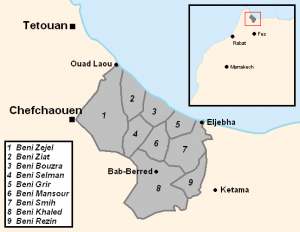



The present monograph – derived from the PhD dissertation of the author – provides a grammatical description of Ghomara Berber, a Berber language spoken in North-West Morocco by about 10,000 people. The grammar consists of a description of the phonology, the morphology and the syntax. In the appendices a number of texts and a wordlist are included. The data were collected on a number of fieldwork trips.
Ghomara Berber has been thoroughly influenced by Arabic resulting in parallel systems on almost all levels of its grammar. The Berber part of the grammar shows a number of rare or unique traits as well. In the phonology the consonants, the vowels, assimilations and labialisation are treated. Ghomara Berber has a number of spirantised consonants which contrast with their non-spirantised counterparts. In the morphology the parallel systems are most evident. The Berber and Arabic systems are treated separately in most chapters. Arabic diminutive patterns have been borrowed and applied to native Berber-morphology nouns extending the already existing diminutive formation.
Many Arabic verbs are borrowed without being integrated into native morphology. They can only be conjugated using Arabic morphology. Different from many Berber languages, the adjective forms a word class of its own. Arabic active and passive participles are taken over unchanged in Ghomara Berber. In the syntax the interaction between the Arabic and Berber in the relative clause and in mood and aspect presents interesting cases of language contact.
This study is of interest to specialists of Berber, Arabic and Afro-Asiatic languages. It especially shows many interesting language contact phenomena.
Following the links below, you will find further monographs and paper collections in our programme focusing on language contact between Arabic and Berber languages:
Questa grammatica di Khalid Mourigh e senza dubbio un contributo importante alla conoscenza delle lingue berbere, molte delle quali ancora poco descritte. In effetti, come indicato dall’autore stesso nell’introduzione, la variante di Ghomara non vanta una lista di studi molto numerosa, fatta eccezione per qualche articolo risalente all’inizio e alla meta del Novecento e una tesi magistrale (El Hannouche 2010).
Il berbero di Ghomara (d’ora in poi BG) e parlato nella provincia di Chefchaouen (nord-ovest del Marocco) dalla confederazione Ghomara, costituita da nove tribu: sette arabofone e due berberofone. L’interesse di questo studio e ancora maggiore se si pensa che il materiale usato e stato raccolto dall’autore interamente sul campo tra il 2009 e il 2013, nell’ambito di un progetto dottorale, ed e composto da sessioni di elicitazioni e registrazioni di discorso spontaneo. […]
La grammatica si conclude con tre testi che danno un’idea della lingua in uso: il primo e il racconto Story about the goat, attestato anche in altre varianti berbere; il secondo e un breve monologo sul problema della migrazione verso la Spagna e, infine, il terzo e una descrizione della vita a Iɛṛaben. Il volume si conclude con un glossario organizzato per radice (pp. 375–448): oltre alla traduzione, informazioni utili sulla sintassi sono spesso indicate per ogni entrata lessicale.
La grammatica di Mourigh, dettagliata e ricca di esempi, mette in rilievo alcuni fenomeni interessanti della lingua, senza dimenticare di trattare aspetti fondamentali e spesso ignorati come la pragmatica. In generale, il volume e la dimostrazione che partendo da un rigoroso metodo di lavoro, associato ad un’estesa attivita di ricerca sul campo, e possibile dare forma ad una grammatica che diventera senza dubbio un riferimento per gli studi di linguistica berbera in futuro.
Valentina Schiattarella in Annali, Sezione Orientale, 79 (2019), 337-340
© 2025 by Rüdiger Köppe Verlag – www.koeppe.de